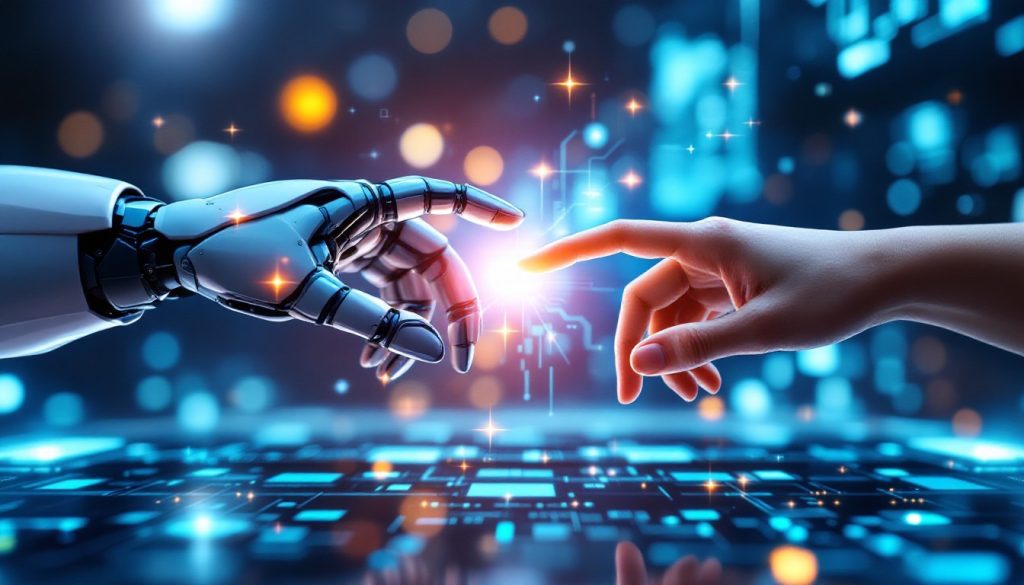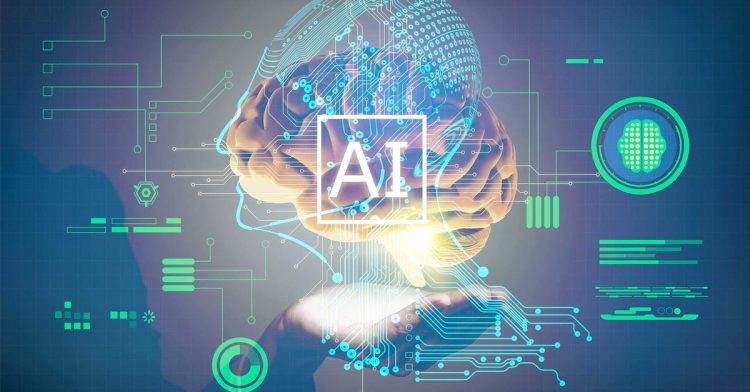The world is undergoing a profound transformation. As the digital era evolves, a new industrial revolution is taking shape, one that is powered by groundbreaking advancements in Artificial Intelligence (AI) and Machine Learning (ML). These technologies, which once seemed like distant dreams, are now real, with capabilities that surpass traditional methods and change the very nature of how industries operate. AI and ML are more than just technological advancements—they are the bedrock of a revolution that will redefine how we live, work, and interact with the world.
This article explores how AI and ML are driving a new industrial revolution, reshaping industries, economies, and societies. By examining the technological advancements behind these fields, their current impact on sectors such as manufacturing, healthcare, finance, and transportation, as well as the future opportunities they create, we can better understand the extent to which AI and ML will alter the trajectory of global progress.
The Foundations of AI and ML: Understanding the Technologies Behind the Revolution
What is Artificial Intelligence?
Artificial Intelligence (AI) refers to the ability of machines to simulate human intelligence processes, such as reasoning, problem-solving, decision-making, and learning. Through algorithms and models, AI systems can interpret data, recognize patterns, and make predictions or decisions autonomously.
There are two broad categories of AI: narrow AI and general AI. Narrow AI, or weak AI, is designed for specific tasks, such as facial recognition, language translation, or medical diagnosis. These systems are incredibly effective at solving the problems they were designed for, but they do not possess general intelligence or awareness. On the other hand, general AI refers to AI systems that would have the capability to perform any intellectual task that a human can do, including the ability to reason and understand abstract concepts. While general AI remains theoretical, the development of narrow AI has already produced extraordinary advancements in a wide range of fields.
The Role of Machine Learning in AI
Machine Learning (ML), a subset of AI, is the study of algorithms that allow computers to learn from data and make predictions or decisions based on that data. Unlike traditional programming, where instructions are explicitly provided, ML systems improve their performance over time by analyzing patterns in large datasets.
There are several types of machine learning, including:
- Supervised Learning: Involves training a model on labeled data, allowing the system to predict outcomes based on input data.
- Unsupervised Learning: Involves uncovering hidden patterns in data without pre-labeled outcomes.
- Reinforcement Learning: Involves learning by interacting with an environment, receiving feedback in the form of rewards or penalties, and using that feedback to improve behavior over time.
The key to ML’s effectiveness lies in its ability to analyze vast amounts of data at speeds that humans cannot match, allowing systems to uncover insights and make decisions with unprecedented precision.
The Synergy Between AI, ML, and Big Data
The convergence of AI, ML, and Big Data is one of the driving forces behind the Fourth Industrial Revolution. Big Data refers to the massive volumes of data generated daily from sources like social media, IoT devices, financial transactions, and more. This data, when properly analyzed, can provide valuable insights into consumer behavior, market trends, and operational inefficiencies.
AI and ML technologies are the perfect tools for managing Big Data. By processing and analyzing vast datasets, AI and ML systems can identify patterns, predict trends, and make data-driven decisions. For example, in healthcare, AI can analyze patient data to predict disease outbreaks or offer personalized treatment plans, while in retail, AI-driven recommendations can provide consumers with personalized shopping experiences based on their browsing history.
The ability to leverage Big Data effectively has turned AI and ML into invaluable assets across nearly every industry.
Industry Transformation: AI and ML in Action
1. Manufacturing: The Emergence of Smart Factories
One of the most significant impacts of AI and ML is being felt in the manufacturing sector, where they are driving the concept of the smart factory. Smart factories are equipped with AI-powered robots, IoT sensors, and connected systems that allow for real-time data collection and analysis, leading to more efficient and flexible production processes.
Automation and Robotics: Automation has long been a part of manufacturing, but AI and ML have taken it to the next level. AI-driven robots can now perform highly complex tasks, such as assembling intricate components, inspecting products for quality, and even collaborating with human workers. These robots can learn from their environment and adapt their actions based on feedback, improving efficiency and reducing the likelihood of errors.
Predictive Maintenance: In traditional manufacturing, machine failure can result in significant downtime and costly repairs. AI and ML technologies are now enabling predictive maintenance, where machines are equipped with sensors that monitor performance in real-time. By analyzing data, AI systems can predict when a machine is likely to fail and recommend maintenance before an issue occurs. This proactive approach reduces downtime and extends the life of equipment.
Supply Chain Optimization: AI is transforming supply chain management by enabling real-time tracking and predictive analytics. By analyzing data from production lines, inventories, and transportation systems, AI can optimize delivery routes, predict stock shortages, and even recommend changes to production schedules, ensuring smoother and more efficient operations.
2. Healthcare: AI in Diagnosis and Personalized Medicine
The healthcare industry is undergoing a dramatic transformation as AI and ML technologies provide new tools for diagnosis, treatment, and drug discovery.
AI in Diagnostics: One of the most exciting applications of AI is in medical diagnostics. Machine learning algorithms are now being used to analyze medical images, such as X-rays, MRIs, and CT scans, with a level of precision that exceeds that of human radiologists. For example, AI models have demonstrated the ability to detect early signs of diseases like cancer, heart disease, and neurological disorders, often identifying conditions before they are apparent to human doctors.
Personalized Medicine: AI and ML are also making significant strides in personalized medicine. By analyzing vast amounts of patient data, including genetic information, medical history, and lifestyle factors, AI can help doctors tailor treatments to individual patients. This approach offers the promise of more effective, less invasive treatments with fewer side effects, revolutionizing the way we approach healthcare.
Drug Discovery: AI and ML are dramatically accelerating the drug discovery process. In traditional drug development, researchers test thousands of compounds in laboratories to identify potential treatments. With AI, however, researchers can simulate how different compounds will interact with the body, drastically reducing the time and cost of drug development. In fact, AI has already been used to discover promising drug candidates for diseases like cancer and COVID-19.

3. Finance: The Rise of AI in Financial Markets
The financial services industry has embraced AI and ML to enhance trading strategies, improve customer service, and streamline operations.
Algorithmic Trading: AI-powered algorithms are reshaping the way financial markets operate. These algorithms can process vast amounts of market data, identifying trends and patterns that humans might miss. AI-driven trading systems can execute buy and sell orders in fractions of a second, allowing firms to capitalize on fleeting opportunities and optimize their portfolios more effectively than ever before.
Fraud Detection and Risk Management: AI is also being used to detect fraud and manage financial risks. By analyzing transaction data, AI systems can identify suspicious patterns of behavior that may indicate fraudulent activity. These systems can flag potentially fraudulent transactions in real time, allowing banks to take immediate action and protect their clients. Additionally, AI can assess market risks by analyzing economic indicators and predicting potential downturns, helping financial institutions make informed investment decisions.
Personalized Financial Services: AI-driven chatbots and virtual assistants are providing customers with personalized financial advice and services. These AI systems can analyze a customer’s financial situation and offer tailored recommendations, from budgeting tips to investment strategies. In doing so, AI is making financial services more accessible and user-friendly, allowing individuals to take control of their financial futures.
4. Transportation: Autonomous Vehicles and Smart Cities
The transportation sector is being revolutionized by AI and ML, particularly through the development of autonomous vehicles and smart cities.
Autonomous Vehicles: Self-driving cars and trucks are poised to transform the transportation industry. These vehicles use AI-powered algorithms to navigate roads, interpret traffic signs, and avoid obstacles. With the ability to learn from real-world driving data, autonomous vehicles have the potential to reduce accidents caused by human error, improve traffic flow, and lower transportation costs.
Smart Cities: AI is also helping cities become smarter. By integrating IoT sensors and AI analytics, cities can optimize traffic management, reduce energy consumption, and enhance public services. AI systems can monitor traffic in real time, adjusting traffic signals to alleviate congestion, and manage energy usage by adjusting street lighting and heating systems based on real-time demand.
5. Retail and E-Commerce: AI in Consumer Experience
In the retail and e-commerce sectors, AI and ML are transforming the way businesses engage with customers and manage their operations.
Personalized Shopping Experiences: AI is increasingly being used to offer personalized shopping experiences. By analyzing customer data, such as browsing history, past purchases, and demographic information, AI can recommend products that are more likely to appeal to each individual. These personalized recommendations are improving customer satisfaction and driving sales for retailers.
Inventory Management: AI and ML are also helping retailers optimize their inventory management. By predicting demand based on past trends, AI can help retailers avoid stockouts and overstocking, ensuring that they have the right products available at the right time. Additionally, AI-driven predictive analytics can help retailers identify emerging trends and adjust their product offerings accordingly.
Customer Service: AI-powered chatbots and virtual assistants are improving customer service by providing instant, 24/7 support. These systems can answer common customer queries, assist with order tracking, and resolve issues quickly, freeing up human agents to handle more complex tasks.
The Future of AI and ML: Opportunities and Challenges
While AI and ML hold immense promise, there are also challenges and risks that must be addressed as these technologies continue to evolve. Ethical considerations, data privacy concerns, and the potential for job displacement are just a few of the issues that need to be carefully considered.
However, the potential benefits of AI and ML far outweigh the challenges. The next industrial revolution promises to usher in a new era of innovation, efficiency, and sustainability. By leveraging the full potential of AI and ML, we can create smarter cities, healthier populations, and more sustainable economies.
Conclusion: The Path Forward
As we stand at the forefront of this new industrial revolution, it is clear that AI and ML will be the driving forces behind the next wave of technological innovation. From manufacturing to healthcare, from finance to transportation, AI and ML are already reshaping industries and improving lives. The possibilities are endless, and the future is filled with promise.
By embracing these technologies responsibly, we can harness their potential to build a brighter, more connected, and more efficient world. The Fourth Industrial Revolution is not just about technology; it is about transforming the way we live, work, and solve the world’s most pressing challenges. The era of AI and ML has arrived—and it is only just beginning.











































